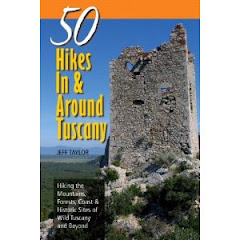Located at the confluence of the Shendandoah and Potomac Rivers, where a sliver of West Virginia meets Maryland and Virginia, Harpers Ferry is a town steeped in human and geologic history. First settled in 1750 and the town established in 1763, Harpers Ferry served a strategic role in the expansion of settlement, commerce, war, and peace for centuries.
 |
| The Armory |
Harpers Ferry was visited by George Washington as part of a movement to establish a series of canals on the various rapids of the Potomac to improve trade and commerce with the burgeoning Ohio Valley. In 1794, Washington established an armory at the site. It was a great strategic location because it was far enough inland to avoid attacks from sea, while guns and munitions produced there could easily be floated downstream to the Chesapeake Bay.
 |
| Downtown Harpers Ferry, WV |
Harpers Ferry is probably best remembered as the site of John Brown's Raid in 1859. This violent abolitionist decided to attack the armory, take the weapons, and distribute them to slaves across the south to create a giant slave revolt. Well, it didn't work out very well for John Brown. Actually, the raid was going great at first, as it caught everyone by surprise. Then a train rolled through town. They captured the train, but when a freed former-slave baggage handler confronted them, he was shot. For some reason, John Brown then decided to let the train leave again.
 |
| Harpers Ferry from the ridgeline |
Thus, when the train got to its next station, they informed the authorities and it wasn't long before the Army descended on the town. After a couple of days of being holed up at the armory, Brown was offered the chance to surrender, which he refused. Then the army troops raided the armory, killing or capturing all of Brown's men. John Brown himself was stabbed with a saber and arrested. He was later tried, convicted, and hung for his actions.
 |
| The old C and O Canal (filled with algae) |
What made the raid so important though was the press it recieved. It really highlighted the means by which some people were willing to go to end slavery. While John Brown may have been extreme, perhaps insane, it did motivate a lot of people as the Civil War approached.
 |
| The view downstream from Jefferson's Rock Thomas Jefferson stood here! |
Harpers Ferry was also a major strategic location during the Civil War. As a place where both rail and canals allowed commerce and trade through the mountains, Harpers Ferry changed hands several times through the war with the Union and Confederacy constantly swapping control. Harpers Ferry also served as a significant in the post-Civil War era as the location of Storer College, one of the first Historically Black Colleges that was run from 1865 to 1955. It was a place to teach "freedmen" and teachers. Today, it is part of Harpers Ferry National Historic Park.
 |
| The rapids along this stretch are very popular with tubers in summer |
Harpers Ferry is also the headquarters of the National Park Service's Interpretation Division. Just about every NPS brochure you pick up at a national park, film you watch at the visitor center, or poster you see on the wall was produced at Harpers Ferry. When a national park wants to create some interpretive display or program, professionals from Harpers Ferry come out to inspect, advise, and document what is happening and often take it back with them to produce it there.
 |
| Looking downstream toward the piedmont |
Geologically, Harpers Ferry is also very interesting. Typically rivers in these parts of the Appalacians meanders down the lengths of the valleys. Typically the valleys formed where softer sedimentary rocks were more easily eroded. But, since the ridges are made of harder, more resistant materials, rivers can not cut across them and just follow the valley.
 |
| Aerial: Harpers Ferry and the confluence is in the upper right Notice the Valley and Ridge arrangement with the Potomac cutting right across |
So, how did the Potomac/Shenandoah Rivers cut perpendicularly across these ridges? How did any of these so called "water gaps" form? There are two theories and both may be true in certain instances. One of them is that the rivers are so ancient that they may actually pre-date the Appalachains (that's 420 million years!). In that case, they may have been able to maintain their course and erode through the ridges at the same rate they were rising up. That is almost certainly the case for rivers in younger landscapes such as the Columbia River through the Cascades or the Colorado River across the Kaibab Uplift. But, to be as old as the Appalachians would make these among the oldest rivers on Earth!
 |
| A water gap in Pennsylvania from the airplane |
The other more likely scenario for these rivers is that drainages (hollows) along fault lines on the outside of the ridges allowed streams to cut into the ridge. As a gap began to form in the ridge, eventually it cut down into the opposite valley and then captured a pre-existing river that was following the valley parallel to the ridges. This stream capture event then allowed the entire river to change course and cut perpendicular to the ridges and out to sea.





















































